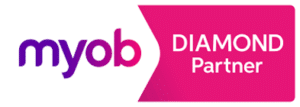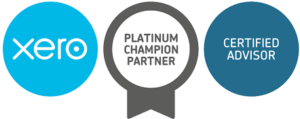One topic clients are often confused about is current accounts and we’re often asked to explain how these work.
What are current accounts?
They are how accountants record and report a business owner’s investment in their business (and / or rental property).
When a business first begins the owner usually invests some money to buy assets and stock, pay rent, spend on advertising and so on.
For an example a new business is being started and let’s say $5K is invested by the owner. The owner’s current account is now $5K in credit and the business now owes the owner $5K. At this time the business cannot pay the owner $5K as the money is spent (and therefore inaccessible) but hopefully the business will make some profit so the owner can be paid back at some later time.
Current accounts can almost be thought of like a bank account (although there’s not always actual cash changing hands) but more like an account of owner contributions vs owner drawings. Owner contributions increase the current account, owner drawings reduce the current account.
The example business is now up and running, has customers and is making enough in sales to pay expenses and all going well, has some money leftover, which is of course profit. Suppose the business has made $1K profit, this is paid to the owner’s current account as a shareholder salary so now the current account is $6K. The owner can now take this $1K (or any amount up to the full $6K) in drawings for personal use providing the business has enough funds available. If the owner takes $1K in drawings their current account is now back to $5K.
Additionally if a home office expense claim is made or perhaps a personally owned vehicle or computer is bought into the business – these will increase the current account by the value of the introduced amounts – this is because the owner has already paid for these items personally and is now transferring the ownership (and value) into the business.
Often clients will ask why their current account is $X in credit (and this can be a significant figure) but they cannot be paid out – they ask where is the money?
Usually it’s in debtors, stock and assets and therefore inaccessible unless debts are collected or assets sold. The business needs to have sufficient cash in the bank to pay out an owner’s current account. This is partly why it’s so important to stay on top of slower debtors to ensure you’re paid in time – if people don’t pay the business, the owners are usually last to be paid (after suppliers, rent etc.) and if some customers are not paying the owners cannot be paid.
It can be a slippery slope of the owner propping things up via overdrafts and loans (for personal and/or business use) to cover the debtors so do be careful of this.
This example, for clarity, doesn’t explain how income tax works with current accounts – but note income tax will need to be paid on any profit earned. Also note it’s normal for a business owner’s current account to be in credit – it’s unusual and undesirable for it to be overdrawn which means the owner is taking too much from the business and this is rarely sustainable.
Current account balances are worked out at annual accounting time and reported in the business financial reports.
We hope this helps explain how current accounts work – if you’re still unsure please ask!



